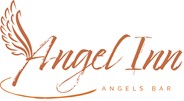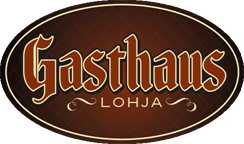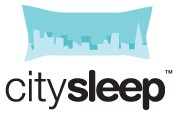A “make or break” for any business is how they set their pricing, so it is vital for the success of your hotel that you employ a well thought out approach to your pricing strategy. How as a business you set your prices can have a positive or negative impact on the reputation of your hotel and its performance. The correct pricing strategy can help you increase your market share and revenue while the wrong pricing strategy can do just the opposite and leave you struggling to keep up with the competition.
Pricing is the process of setting your room rates to achieve the optimal revenue, meaning that you sell what rooms you have available at the highest possible price to achieve the maximum revenue. Price setting can be dynamic and is predominantly driven by changes in demand, local competition and seasonality.
As a part of your regular forecasting, planning and budgeting processes it is smart to map out your hotels performance over the year against a strategy of how much a standard rate set at the beginning of the year can fluctuate depending on demand and your local market conditions.
For example, if you are the only property in town and there is a big event and your rooms are in demand, this should be reflected in the level of rates that you set. But it is important to make sure that you do not have too high a fluctuation, select a fair price point and don’t be too greedy. Ultimately, its important to build a business for the long term with loyal and satisfied guests that you will want to support your business when demand slows down. Choosing a clear price positioning strategy for your standard base rate will help strengthen your value perception to customers.
Start with a booking channel audit to help with your rate strategy
Booking channels such as your website and OTAs (Online travel Agents) should be regularly monitored for cost effectiveness. If a particular channel is performing better than the others, work out what could be the difference and adjust accordingly your other channels. It is important to make time to assess the cost and share of business that your various distribution channels contribute. The objective is to optimize the distribution channel that costs you the least amount and generates the highest revenue for you.
Each online distribution channel should play a different role in your hotel marketing program with a mix of channels, rather than relying solely on one. For example giving the majority of your room inventory to one channel may help in the short term but it can prove costly. You need as a business to develop your own direct channels, for example your website – which will reduce your cost of sales and give you the opportunity to build a stronger relationship directly with the guest.
What is rate parity?
With multiple online booking channels available now it has led to a greater transparency in the rates distributed by hotels. To a prospective customer, it is a positive thing that your room rates are consistent across the internet, inconsistencies in rates may be enough to put a customer off, especially if you are more expensive than what they can find with OTAs.
To achieve “rate parity” where rates are the same across all online distribution channels you’ll need to know all your comparable commissions and margins. A recommendation would be to produce an excel spreadsheet with all the conditions of each OTA deal and online channel. It will help you to better understand your property’s distribution mix by adding the room nights and the costs against the following variables;
- Tax % (included / excluded)
- Net / commissions
- Margin % / fees
- Cancellation policies
- Payment policies
- Free sale / allotment
Setting your price strategy – comparing “apples to apples”
Each customer has different motives on why they buy, experience expectations, what their needs are and a level of willingness to pay at a particular price point for different products. Consequently, by properly segmenting potential guests, we can be more efficient with our pricing strategy, and take a different approach for each segment.
There are a number of factors that should be considered when setting price such as; customer demand, seasonality, business cycle (boom and slump), channel shift, competitor environment, your product positioning, marketing impact, profit margins and the costs of doing business.
To get you started, here are 9 points to help develop your own pricing strategy:
- Historically what was most well received by your guests and in the market - do they have a particular preference in format, packaged, bundled, and inclusive, etc.? Keep in mind anomalies in the market that may have had influence for a particular period in previous years.
- What strategy best complements the business mix your hotel receives? So what is your average length of stay and your product positioning? For example a spa resort hotel should have a different approach compared to an airport hotel where purchase behavior will be different.
- How does the rate packaging affect your channel manager or other distribution channels? Consider your top production channels and start to research which approaches are broadly accepted so that you avoid any revenue drop off if you make changes.
- Assess and benchmark your competitors’ pricing across rate structures, room types and different amenities and conditions.
- Look at your historical business and market intelligence over a range of years to get a "feel" for the market.
- When looking at recent history, pay close attention to factors that might affect pricing, such as economic conditions, weather, public holidays —anything that could cause data to be different year over year.
- Develop a clear value proposition that allows you to equate the value of your hotel and the services you offer to the price a guest would want to pay
- Check out your competitive set online and if you have the time with an on-site inspection as well.
- Don’t overprice your hotel; it is better to under promise and over deliver. Also be careful not to be too aggressive with your price reductions as this could leave a doubt in a customers mind over the quality of your property.
While OTAs are important, the “bottom line” impact of receiving a direct booking can’t be understated. Not only does this positively impact your profitability but enables you to build a long-term relationship directly with the guest and take control of the communication.
Consumers in their “deal mentality” intrinsically feel that they want to have a direct relationship to cut out “the middle man”. A hotel website is the ideal platform to do this. It should yield the lowest cost of customer acquisition because the customer came to you.
The challenge is attracting the direct bookings without the major expense of campaigns and aggressive pricing tactics. Even when running a limited rate promotion there is an obligation to inform your OTA partners.
So here are 7 basic revenue management strategies to help you with positioning the value of your hotel and managing your approach to pricing:
- Seek out a local competitor and set one room rate at the same price point as they have available, and set another room rate at a slightly higher rate. Matching the rate strategically lets customers see how you are positioning yourself, with the opportunity to up sell customers to a more expensive room.
- Position yourself higher than your competitive set with rates slightly higher and justify the increase in price with added value amenities or services that are included in the rate.
- Word-of-Mouth from satisfied customers could generate a lot of positive momentum around your property. By offering a promotion code for booking direct, guests should be encouraged to refer their friends and family to stay at your property.
- Pet-friendly can be very guest-friendly. By opening your doors to our four legged friends it is possible to attract a different customer segment and charge a little extra for your added services.
- Extending a stay from business into leisure is a great initiative - discounts for an extended stay when paying the regular rate for the first few nights, could ensure a higher occupancy and an incremental revenue opportunity.
- Provide lower rates and special offers to a limited audience to drive your direct bookings by inviting guests to join a special offer mailing.
- Make the direct booking process simple and effective. The ease of booking directly on your own web site needs to match the OTA experience for efficiency and confidence that a reservation went through.
Take Away (free e-guide for download)
Each property is different, so use our points above to help you understand more about how you can tweak your pricing strategy to suit your needs.
Just click here and send us an e-mail today to receive your free copy of our e-book today.
To help you find the time to improve your revenue management skills, of which pricing is a key part – HappyBooking have written together with John Kennedy a Basic Revenue Management Guide for hotels, hostels, apartments & meeting rooms.
Our guide is an introduction to revenue management for those in the hotel and hospitality business, whether you are starting out or just need a refresher!
In this guide we cover a variety of topics and revenue management tactics to help you to get started with the basics and how to improve performance.
The main topics we cover are:
Introduction to Revenue Management - Market segmentation - Pricing & rate strategy - Budgets & forecasting - Capacity allocation - Benchmarking
Send an e-mail to support@happybooking.se to and get your free copy by e-mail today
HappyBooking is first and foremost a property management system. That means they help you with the boring admin and automate tasks giving you more time to focus on driving your revenue performance. On average customers can get back up to 10 hours per week – think what you could do with that extra time!
HappyBooking have always focused on creating a user-friendly booking system to help property owners improve overall performance, and generate more revenue and reduce costs by enabling guests to book directly rather than go through a third party.
Our guest blogger is John Kennedy.
John is a hospitality consultant, dedicated to helping increase revenue through marketing, revenue management and efficient operations. www.kennedyandersson.com
Image source: www.freepik.com



